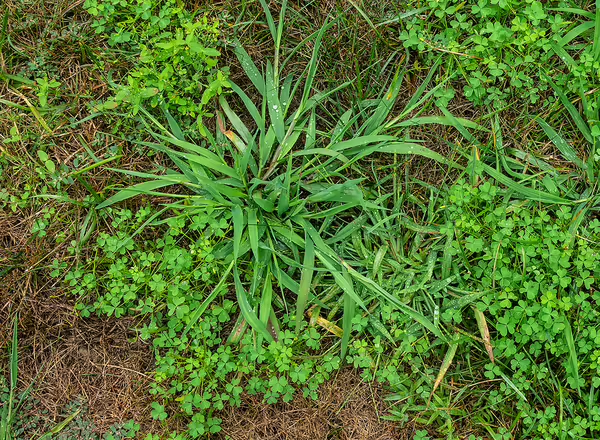
Managing Shady Lawns
Lawns under the shade of trees are typically thin, weak, and of poor quality. Maintaining a quality stand of grass under the shade of trees can be difficult and requires modifications in lawn care practices. Shade-tolerant grasses still need an acceptable amount of light to grow. In addition, lawns in shade areas generally cannot tolerate or recover from stress problems as compared to lawns growing in full sun.
Choosing a shade-tolerant grass mixture is critical. Fine fescues are the primary lawn species in these mixtures. Even to grow the most shade-tolerant lawn species, it is recommended to have at least 2 hours of direct sunlight every day. This minimum amount of light does not equate to a high-quality stand of grass. Additional sunlight will yield improved quality.
Start reducing shade for grass growth by pruning vegetation (trees and large shrubs) as much as feasible to allow the maximum amount of light to reach the soil surface. Keep in mind that healthy shade trees offer more property value and utility savings to a home than a lawn.

Care of established lawns in shade areas will be different than lawns located in full sun. Mow higher (near 3 inches), and fertilize less in the shade, as too much nitrogen can be detrimental to shade lawn species. Contrary to popular belief fertilizer is not plant food. Plants feed themselves using photosynthesis. For instance, nitrogen fertilizer triggers a response of vegetative growth in turfgrass. Following that growth, the grass needs to recover that energy using photosynthesis. However, in the shade, the plant can’t recover and ends up becoming stressed.

About one to two pounds of actual nitrogen per 1,000 square feet per growing season is all that is needed. When watering shade lawns, do so as infrequently as possible, and water deeply. Reduce traffic over lawns in the shade.
Lawns in shade often have problems with moss or shade-loving weeds. Ground ivy (creeping charlie) or nimblewill are prime examples of shade-tolerant weeds. These problems exist primarily because the lawn grasses are thin and weak, allowing easy invasion. Follow the steps outlined above to help avoid these problems. Refer to other topics on this website for specific control options.
Groundcovers as an alternative
If these practices have been followed but the lawn still fails, there probably is not enough light even for shade-tolerant grass species. Often a shade lawn mix is seeded, and comes up healthy, but declines rapidly due to a lack of sufficient light. If lawn grasses have failed, try a shade-tolerant groundcover or mulch, possibly in combination with ferns or woodland plants. Containers planted with shade-tolerant annuals can produce vibrant pops of color in a shaded landscape.
Find shade-tolerant native plants: